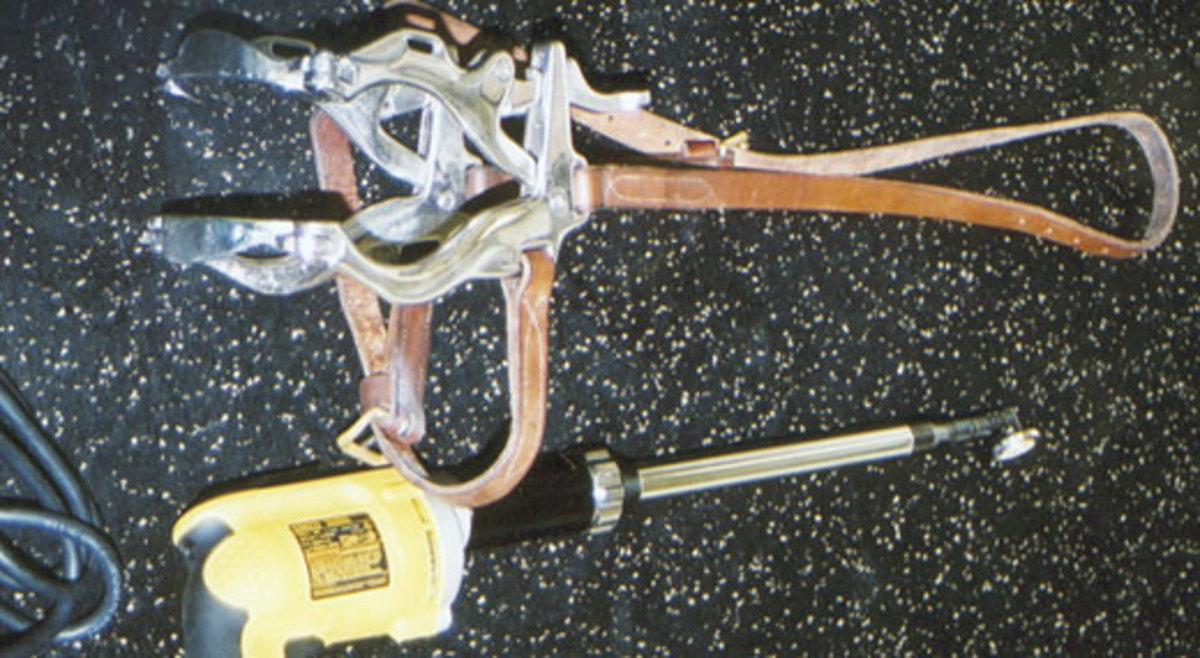I have observed in recent years changes taking place in how routine equine dentistry is done. These changes have come about for several reasons and they all benefit the horse and overall horse health. First of all, the basic tools used in doing the equine dentistry procedures are evolving from manually run dental floats to power-run drills.

There is also a specialization trend evolving where people are training and equipping for just doing horse dentistry. The job of floating horses’ teeth has been something that, in my experience, was often requested while a veterinarian was called out for some other ailment. The typical scenario was, “Oh, while you’re here, Doc, could you do this horse’s teeth?” Now I believe we’re seeing more situations where the sole purpose for an appointment is the dental work.
I believe the evolution of the power tools is a good thing, especially for the horses with special dental problems. Those problems are the horses with overbites or other mal-occlusions and older horses that start to lose teeth or have “broken mouths.” Horses have compound teeth that keep erupting throughout their life. The teeth wear unevenly, and the outer hard enamel parts develop sharp points on the outside edge of the upper teeth and inside edge of the lower teeth.

This situation results from the fact that the upper cheek tooth arcade is slightly wider than the lower cheek tooth arcade, and horses grind from side to side as well as up and down in chewing their food. If there is no opposing tooth to wear down a tooth as it erupts, sometimes you can have massive amounts of work to do to correct the problem.
I believe the power-run floats can enable the dentist to more effectively correct the problem. I also believe there are certain cases that should be referred to someone who specializes in dentistry and has the specialized equipment because of what can be accomplished for these horses.
I think that the horse with no unusual problems with his teeth can be cared for quite satisfactorily by someone experienced with the traditional manual floats. In fact, it’s my personal opinion that doing the teeth on 2-year-olds to shape their mouths for more comfortable acceptance of a bit is more practically done with manual floats. The procedure is less intrusive, and you’re not faced with having to grind off large amounts of hard enamel. The deciduous molars present at that age aren’t nearly as hard in structure as the permanent teeth.

However, I believe the trend in equine dentistry is toward universal use of power instruments. Floating teeth manually is hard work, and once people get used to using power instruments I don’t think they want to do it manually. I’ve had to give up floating teeth because of shoulder problems myself. The occupational hazard of palpating mares, floating teeth and swinging a rope all these years, I guess.
We are in a transitional stage with equine dentistry, and there are a few variables to be worked out. One of the problems is the medico-legal aspect of who can do the procedure. Knowledge of dental pathology and dynamics, skill in handling the instrumentation, and safe administration of the potent sedation drugs needed to facilitate these procedures have to be considered. Oh, and have I mentioned the cost has also been advanced?










